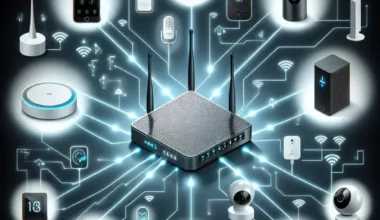Introduction
In today’s connected world, a robust and reliable internet connection is crucial. The increasing number of smart devices in our homes and offices often leads to network congestion, making it essential to invest in advanced networking equipment. One such innovation is the tri-band router. But what makes a tri-band router a superior choice? This article delves into the advantages of using a tri-band router, helping you understand why it might be the perfect upgrade for your network.
Understanding Router Bands
A router band refers to the frequency range that a router uses to transmit wireless signals. Most traditional routers operate on either the 2.4 GHz or the 5 GHz band. Tri-band routers, however, utilize an additional 5 GHz band, offering three separate frequency channels. This can have a significant impact on your network’s performance.
Tri-Band Router Advantages
1. Reduced Network Congestion
One of the most significant advantages of tri-band routers is the reduction in network congestion. By having three separate frequency channels, a tri-band router can better distribute connected devices across different bands. This helps in minimizing interference and maintaining high-speed connectivity for all devices.
| Router Type | Frequency Bands |
|---|---|
| Single-Band | 1 (2.4 GHz) |
| Dual-Band | 2 (2.4 GHz & 5 GHz) |
| Tri-Band | 3 (2.4 GHz & two 5 GHz) |
2. Enhanced Speed and Performance
With an extra 5 GHz band, tri-band routers can handle more data at higher speeds. This is particularly beneficial for activities that demand substantial bandwidth, such as streaming 4K videos, gaming, and downloading large files. The additional band ensures that high-speed activities are not hindered by other devices on the network.
3. Optimal Load Balancing
Tri-band routers are equipped with advanced load balancing features. Load balancing allows the router to intelligently distribute devices across the three bands, ensuring that no single band is overloaded. This leads to a more stable and efficient network.
Load Balancing Benefits:
- Prevents bottlenecks
- Maintains high speeds for all devices
- Offers a seamless gaming and streaming experience
4. Future-Proofing Your Network
As the number of connected devices continues to grow, a tri-band router offers a future-proof solution. The additional 5 GHz band ensures that your network can support an increasing number of high-demand devices without compromising performance. Investing in a tri-band router now can save you the hassle and cost of frequent upgrades in the future.
5. Improved Wireless Range
While the primary benefit of a tri-band router is its enhanced bandwidth management, it can also improve wireless range. By reducing congestion and interference, the overall wireless coverage of your network can be more stable and far-reaching. This is particularly useful in larger homes and offices where signal strength might otherwise fluctuate.
Range Improvement Advantages:
- Better signal strength in distant areas
- Reduced dead zones
- More consistent coverage throughout the premises
Conclusion
Tri-band routers provide significant advantages over single-band or dual-band routers. From reducing network congestion and boosting speed to offering superior load balancing and future-proofing your network, the benefits are clear. Whether you are streaming high-definition videos, engaging in online gaming, or simply want a stable connection for multiple devices, investing in a tri-band router can make a substantial difference in your overall network experience.






